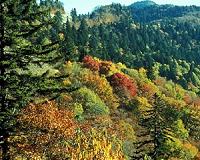| . |  |
. |
Cancun, Mexico (SPX) Dec 09, 2010 Concern for high-mountain regions of the world is rising, according to a new report released by the United Nations Environment Programme (UNEP), which states that the Himalayas and many other glaciers are melting quickly, threatening lives by flooding, and by reducing the region's freshwater supply. The findings of the report, "High mountain glaciers and climate change" were announced during the UN climate meetings in Cancun, where negotiators are working towards an agreement to reduce climate emissions. The new UNEP data underlines the urgent need for climate action that will produce quick results - a topic addressed by a separate event today in Cancun, hosted by UNEP and the Federated States of Micronesia, a country calling for a fast-action work program to protect its low-lying islands and other vulnerable countries from climate change impacts. The panel of scientists and policymakers, including UNEP Executive Director, Achim Steiner, and Mexican Nobel Laureate Mario Molina, emphasized the need to address non-CO2 climate forcers like black carbon soot, methane, tropospheric ozone, and HFCs to achieve fast mitigation. Black carbon, a particulate aerosol produced from incomplete combustion of fossil fuels and biomass burning, directly contributes to glacial melt by settling on snow and ice, which darkens the surface and then absorbs the heat instead of reflecting it. "The Himalayan glaciers are the main freshwater source for hundreds of millions of people across several countries," said Durwood Zaelke, President of the Institute for Governance and Sustainable Development. "Fast mitigation of black carbon soot and other non-CO2 forces are the best hope to avert disaster." Because these non-CO2 climate warming agents are short-lived in the atmosphere compared to CO2, which can remain for hundreds to thousands of years, reducing them can buy critical time to make aggressive cuts in CO2 emissions. Added Zaelke, whose organization focuses on the non-CO2 issue and is attending the meetings in Mexico: "Reducing CO2 is essential and we can't lose that focus, but these are complementary measures that are within easy reach. We would be guilty of Planetary malpractice to waste this opportunity." Achim Steiner stated that reducing the non-CO2 forcers "can buy back some of the time" the world has wasted by not addressing CO2 earlier.
Share This Article With Planet Earth
Related Links Institute for Governance and Sustainable Development Climate Science News - Modeling, Mitigation Adaptation
 Greener Climate Prediction Shows Plants Slow Warming
Greener Climate Prediction Shows Plants Slow WarmingGreenbelt MD (SPX) Dec 09, 2010 A new NASA computer modeling effort has found that additional growth of plants and trees in a world with doubled atmospheric carbon dioxide levels would create a new negative feedback - a cooling effect - in the Earth's climate system that could work to reduce future global warming. The cooling effect would be -0.3 degrees Celsius (C) (-0.5 Fahrenheit (F)) globally and -0.6 degrees C (-1.1 ... read more |
|
| The content herein, unless otherwise known to be public domain, are Copyright 1995-2010 - SpaceDaily. AFP and UPI Wire Stories are copyright Agence France-Presse and United Press International. ESA Portal Reports are copyright European Space Agency. All NASA sourced material is public domain. Additional copyrights may apply in whole or part to other bona fide parties. Advertising does not imply endorsement,agreement or approval of any opinions, statements or information provided by SpaceDaily on any Web page published or hosted by SpaceDaily. Privacy Statement |